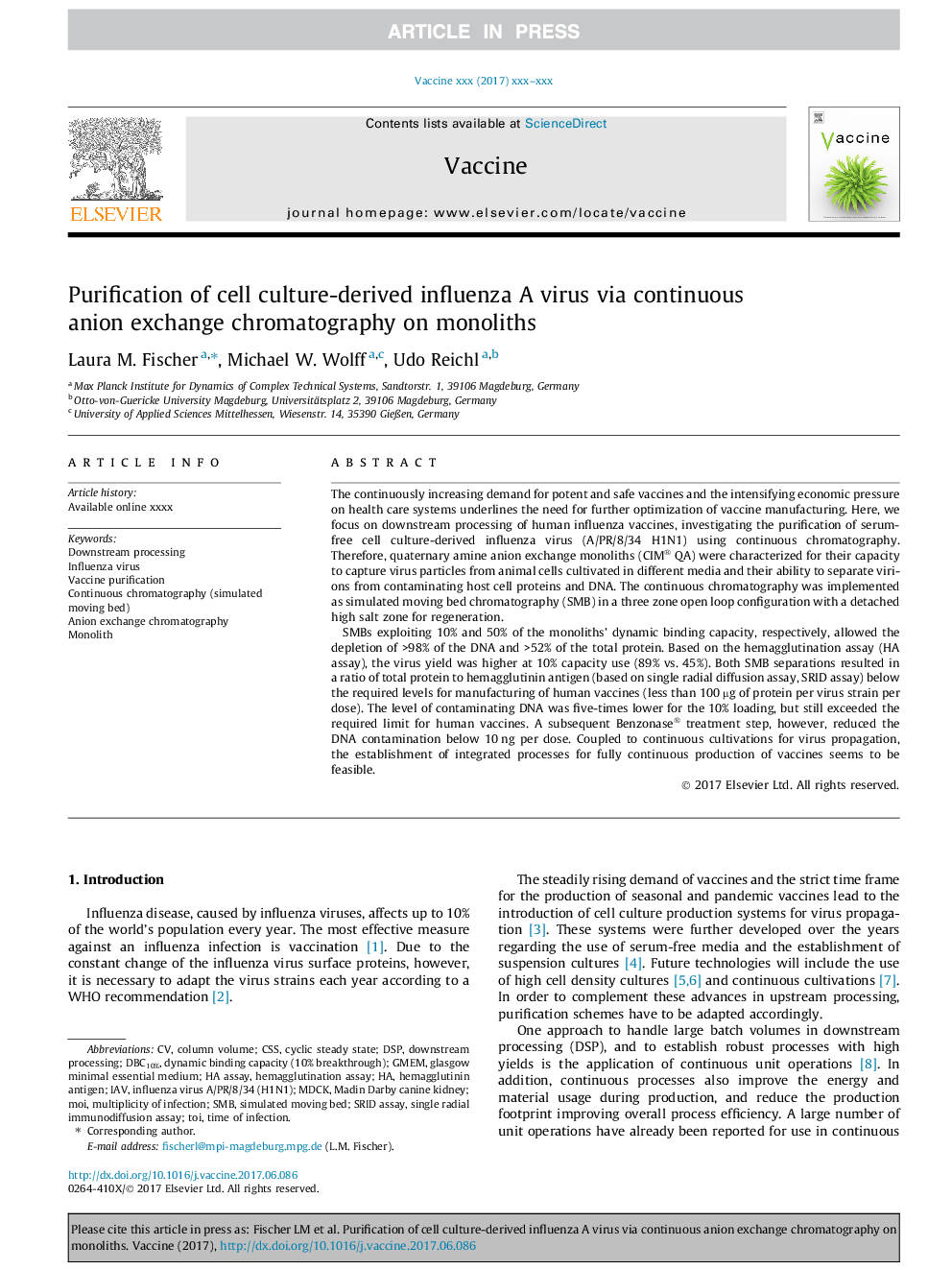| Article ID | Journal | Published Year | Pages | File Type |
|---|---|---|---|---|
| 8485675 | Vaccine | 2018 | 8 Pages |
Abstract
SMBs exploiting 10% and 50% of the monoliths' dynamic binding capacity, respectively, allowed the depletion of >98% of the DNA and >52% of the total protein. Based on the hemagglutination assay (HA assay), the virus yield was higher at 10% capacity use (89% vs. 45%). Both SMB separations resulted in a ratio of total protein to hemagglutinin antigen (based on single radial diffusion assay, SRID assay) below the required levels for manufacturing of human vaccines (less than 100 µg of protein per virus strain per dose). The level of contaminating DNA was five-times lower for the 10% loading, but still exceeded the required limit for human vaccines. A subsequent Benzonase® treatment step, however, reduced the DNA contamination below 10 ng per dose. Coupled to continuous cultivations for virus propagation, the establishment of integrated processes for fully continuous production of vaccines seems to be feasible.
Keywords
Related Topics
Life Sciences
Immunology and Microbiology
Immunology
Authors
Laura M. Fischer, Michael W. Wolff, Udo Reichl,
